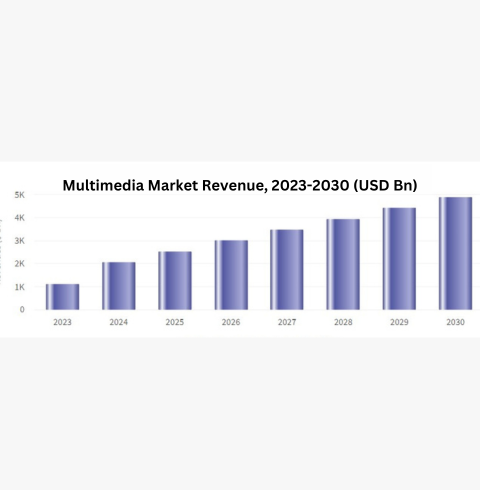Future of Multimedia Course
Multimedia has a spatial future. The seamless blending of digital and physical areas, known as spatial computing, is becoming more popular. Examine the ways in which this trend is changing user engagement, from immersive educational simulations to virtual try-on experiences in e-commerce. The animation industry is expected to increase in value from USD 394.6 billion in 2022 to USD 528.8 billion by 2030, according to Market in Research.
Importance of Multimedia Course
The learning process can be varied and improved with the use of multimedia information, which also improves knowledge preservation.More opportunities for students to interact with the subject can be offered by educational videos.Videos that are made available for course content can be accessed by students worldwide.Additionally, multimedia guarantees that learning is suitable for a broad variety of students. For students who prefer to read along or who have limitations of hearing, videos with transcripts or closed captions can be helpful. By incorporating multimedia into your course materials.
Why Choose Multimedia Course?
In order to have a well-rounded education, multimedia arts students benefit from the invaluable opportunity to experiment with a variety of media, such as painting, graphic design, photography, video, 3D art, and sound design.
In reaction to emerging technologies and changing trends, art is always evolving. As a professional in the area, you will always have the chance to pick up new abilities, skills, methods, and tools. This is why a career in art has the potential to be exciting.
Career Growth of Multimedia Course
The U.S. Bureau of Labor Statistics projects that employment in animation and special effects will increase by 4% between 2019 and 2029.
Multimedia experts may operate in a variety of fields and go by several titles. A variety of industries offer job prospects, including graphic arts, marketing, computers, cinema, and communications. A few examples of job titles are web developer, game designer, animation specialist, and film editor.
Other Trainings
Introduction to Multimedia
- History and Evolution
- Basic Concepts
- Components of Multimedia
- Multimedia Applications
- Current Trends
Graphic Design and Imaging
- Fundamentals of Design
- Image Editing Software
- Digital Illustration
- Photography
- User Interface Design
Audio and Video Production
- Audio Fundamentals
- Audio Software
- Video Production
- Video Editing Software
- Storyboarding and Scripting
Animation and Motion Graphics
- Principles of Animation
- 2D Animation
- 3D Animation
- Motion Graphics
- Special Effects
Interactive Media and Web Design
- Web Design Principles
- HTML and CSS
- JavaScript and Interactive Elements
- Content Management Systems
- Multimedia Integration







